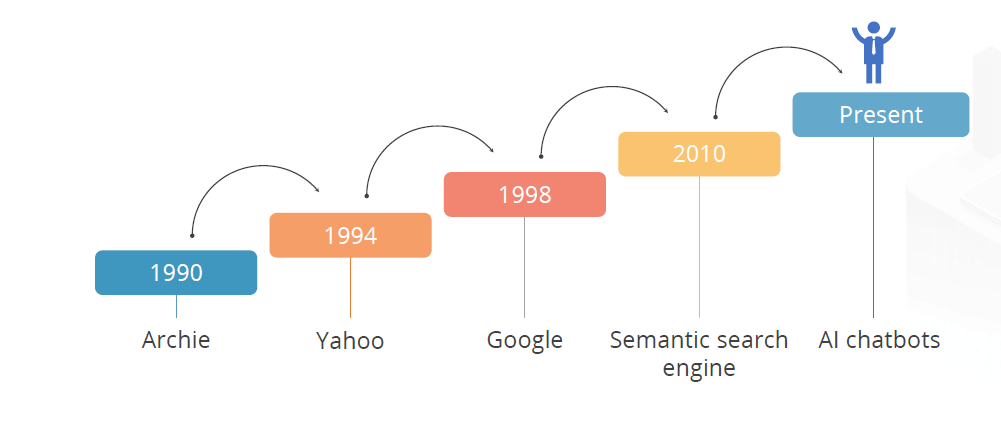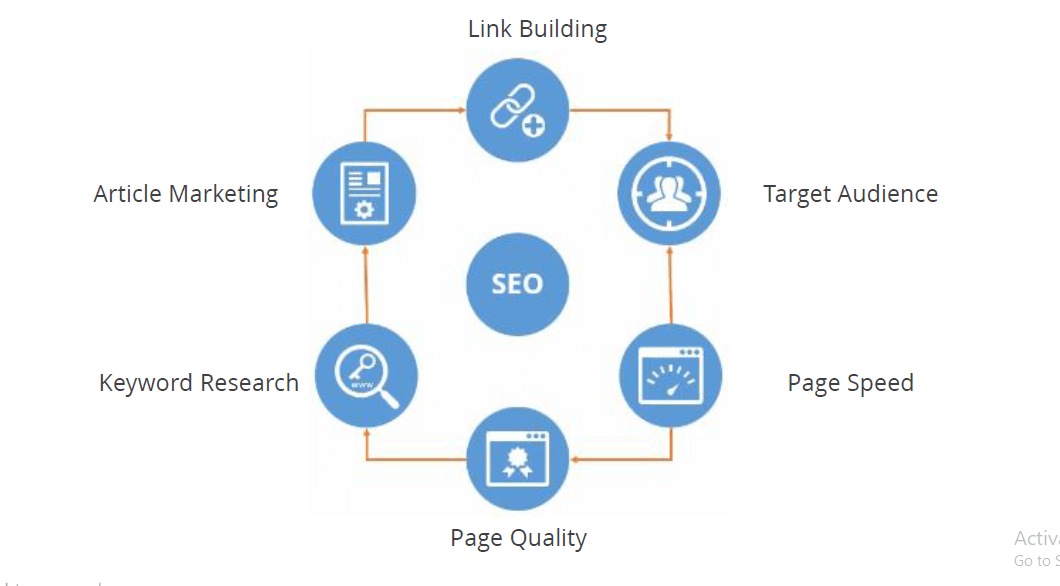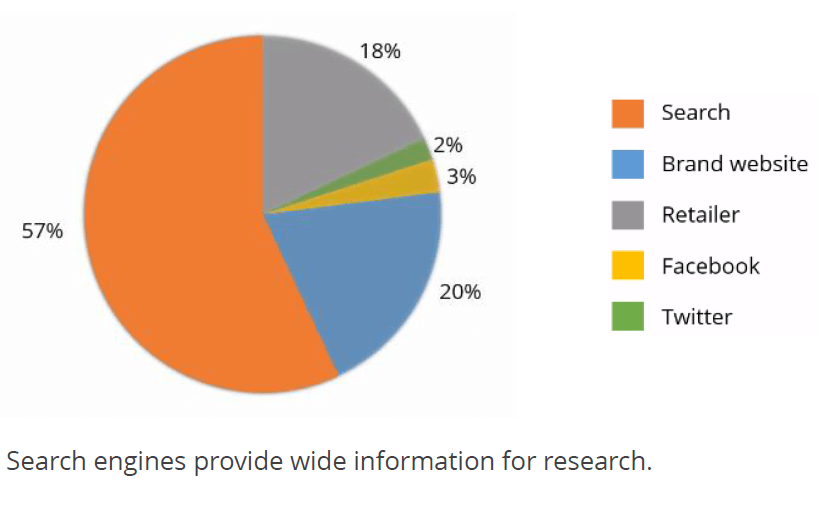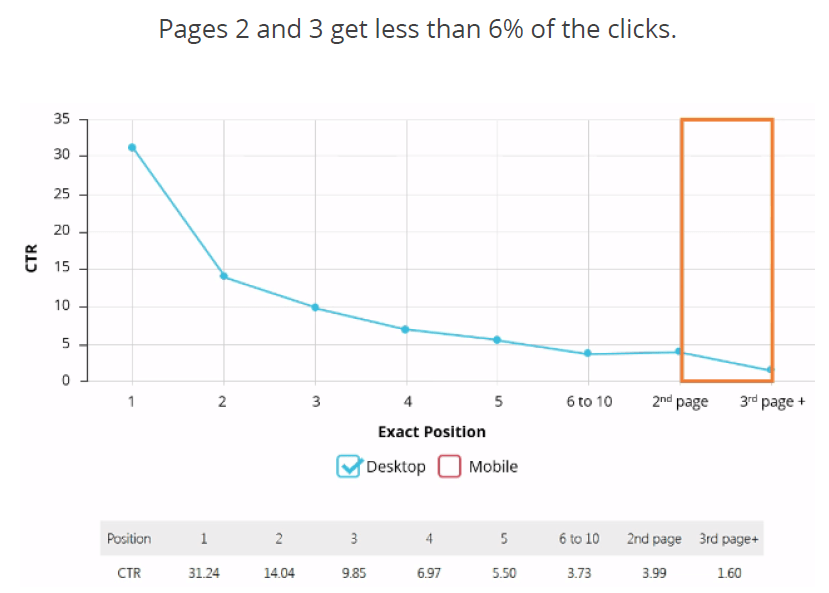Introduction
Search Engine Optimization (SEO) is a powerful way to increase the visibility of your business.
At its most common basic, SEO is about increasing the rankings of your website.
At its most complex, it is about managing the programming, content, visibility and success of a website.SEO enables you to know what your customers want and helps them find you on the search results page.SEO has changed over the years as the search engine algorithm has evolved. However, SEO is still the number one activity of successful businesses Therefore, it is important to develop new SEO skills and keep oneself up to date on the latest information to be able to drive a successful busine online.
Evolution Of Search Engines

Search Engine Components

Facts about seo
It’s a strategy to increase the quantity and quality of traffic.
It improves the ranking of websites.
It increases a website’s visibility.
SEO: Advantages
Improves website traffic,leads, and sales
Enhances credibility
Increases quality traffic
Enhances content marketing efforts
Enhances content marketing efforts
Reduces dependency on paid ads Provides
Provides competitive advantage
Provides measurable outcomes
SEO: Disadvantages
Consumes a lot of time
Fails at guaranteeing results
Falls short of keeping up with the frequently updating algorithm
Falls short of meeting increased demands
Fails at providing complete control overmarketing methods
Why seo is important
SEO produces long lasting results.SEO with local search features can enhance your visibility and help you reach people in your local area.Skills necessary for SEO are integrated across multiple digital marketing disciplines.

Skills necessary for SEO are integrated across multiple digital marketing disciplines.

The visibility on the search results first page is very important.
About 71% of the searches result in a click on first page results.
The first five results account for 67% of all the clicks.Pages 2 and 3 get less than 6% of the clicks. Benefits of Top Rankings Being on the first page is essential, and obtaining higher rankings is also important because higher rankings give you better chances of getting clicked.

Types of seo
- On page seo
- Off page seo
- Technical seo
- Local seo
1. On-Page SEO : On-page SEO is a technique by which we can resolve all development issues of the website. It refers to optimizing the elements on your website itself to make it search engine-friendly. Think of it as tailoring your website content and structure to please both users and the search engine algorithms.
Key Factors of On-Page SEO
Keyword Optimization : Keywords are the terms your audience types into the search engine. Research and identify the right keywords your target audience uses. For example, if you own a bakery in delhi, keywords like “best cakes in delhi ” or “custom cakes near me” are terms you should target. Place these keywords naturally in the title, headings, and throughout your content.
Note : Avoid keyword stuffing, which can harm your rankings. Aim for a natural, user-centric tone.
Content Quality : Search engines prioritize high-quality, valuable, and relevant content. Write blog posts, guides, or how-to articles that solve your audience's problems. The longer the user stays on your page, the better it signals search engines about your content’s usefulness. Example: On a bakery website, write a blog like “10 Creative Ideas for Birthday Cakes” to target specific queries.
Meta Tags : Titles and meta descriptions are crucial in attracting search clicks. Include your primary keywords, but make sure the titles are engaging and the meta descriptions are captivating. Example for a bakery: Title Tag: “Order Custom Cakes in delhi | Fresh & Delicious” Meta Description: “Looking for cakes that wow? Choose our custom bakery in delhi for personalized cakes, cupcakes, and treats designed to delight!”
Internal Linking : Link to other pages on your website. For instance, if you mention “gluten-free cakes” in a blog post, link it to a specific product page for gluten-free cakes. It enhances user navigation and boosts SEO by creating a network of related content.
Image Optimization : Use relevant file names and add alt text to your images to make them accessible and improve your rankings for image search. Compress images to ensure your site loads quickly.
Use tools like Yoast SEO (for WordPress) to improve your on-page elements. Write content that matches user intent (informational, navigational, or transactional).Perform regular content audits to improve outdated or underperforming blog posts.
2. Off-Page SEO :
Off-page SEO refers to actions taken outside of your website to improve its visibility and authority. It’s all about building trust, credibility, and relationships with other websites to signal search engines that your site deserves to rank higher. Key Factors of Off-Page SEO Backlinks (Link Building) Backlinks are links from other websites that lead visitors to your site. Think of them as “votes of confidence” from other sites. However, not all backlinks are created equal. Focus on acquiring high-quality backlinks from authoritative websites in your niche.Example: If a popular food blogger mentions your bakery and links to your site, it signals to Google that your site is trustworthy.
Tip: Use outreach strategies like guest blogging or offering free product samples in return for reviews and mentions. Social Signals Social media shares and engagement can help amplify your content visibility. While they don’t directly impact rankings, increased exposure can lead to more traffic and backlinks. Brand Mentions Even if another site doesn’t link to you directly, mentions of your brand or business across the internet can increase your online authority. Actively monitor who’s talking about your brand.
Actionable Tips Create link-worthy content like infographics, in-depth guides, or original research. Use tools like Ahrefs or SEMrush to identify where your competitors are getting backlinks. Engage in online communities like forums or Facebook groups related to your niche.
3.Technical SEO :
Technical SEO focuses on the backend aspects of your website. Its main aim is to ensure your website is easy to crawl, index, and display properly on all devices.
Key Factors of Technical SEO :
Site Speed : A slow website can frustrate users and result in high bounce rates. Tools like Google Page Speed Insights can identify issues with speed. Compress images, enable browser caching, and minimize unnecessary scripts to boost load time.
Mobile-Friendliness :
With more people browsing on their smartphones, mobile usability is critical. Ensure your site is responsive and adapts seamlessly to different devices. Example: Use larger fonts and tappable buttons to improve the mobile experience.
Indexing :
Search engines need to crawl and index your site to rank it. Generate and submit an XML sitemap to Google Search Console to help the search engines understand your site structure.
SSL and Security :
HTTPS is now a critical ranking factor. Install an SSL certificate to ensure your site is secure.
Fix Broken Links :
Missing pages or broken links harm user experience and SEO. Regularly audit your site to fix these issues.
Use tools like Screaming Frog to audit your site for technical issues. Enable features like lazy loading for heavy images and videos to speed up page load times. Use schema markup to help search engines understand your data better (e.g., product prices, reviews).
4. Local SEO :
Local SEO specifically focuses on optimizing your visibility in local search results. It’s a must for businesses targeting customers in a specific geographical area.
Key Factors of Local SEO
Google Business Profile (GBP) : Claim and optimize your Google Business Profile. Add accurate business information, opening hours, high-quality images, and respond to customer reviews.
Location-Specific Keywords: Use keywords that target your locality. For instance, a bakery in delhi might target “best bakery in downtown delhi ” or “custom cakes delhi loop.”
NAP Consistency : Ensure your Name, Address, and Phone Number (NAP) are consistent across your website, directories, and social profiles. Even minor discrepancies can confuse search engines and users.
Local Citations :
List your business in local directories like Yelp, TripAdvisor, or local Chambers of Commerce websites. These citations help increase local rankings.
Lorem ipsum dolor sit amet, consectetur adipisicing elit. Autem dolore, alias, numquam enim ab voluptate id quam harum ducimus cupiditate similique quisquam et deserunt, recusandae.
Our Company